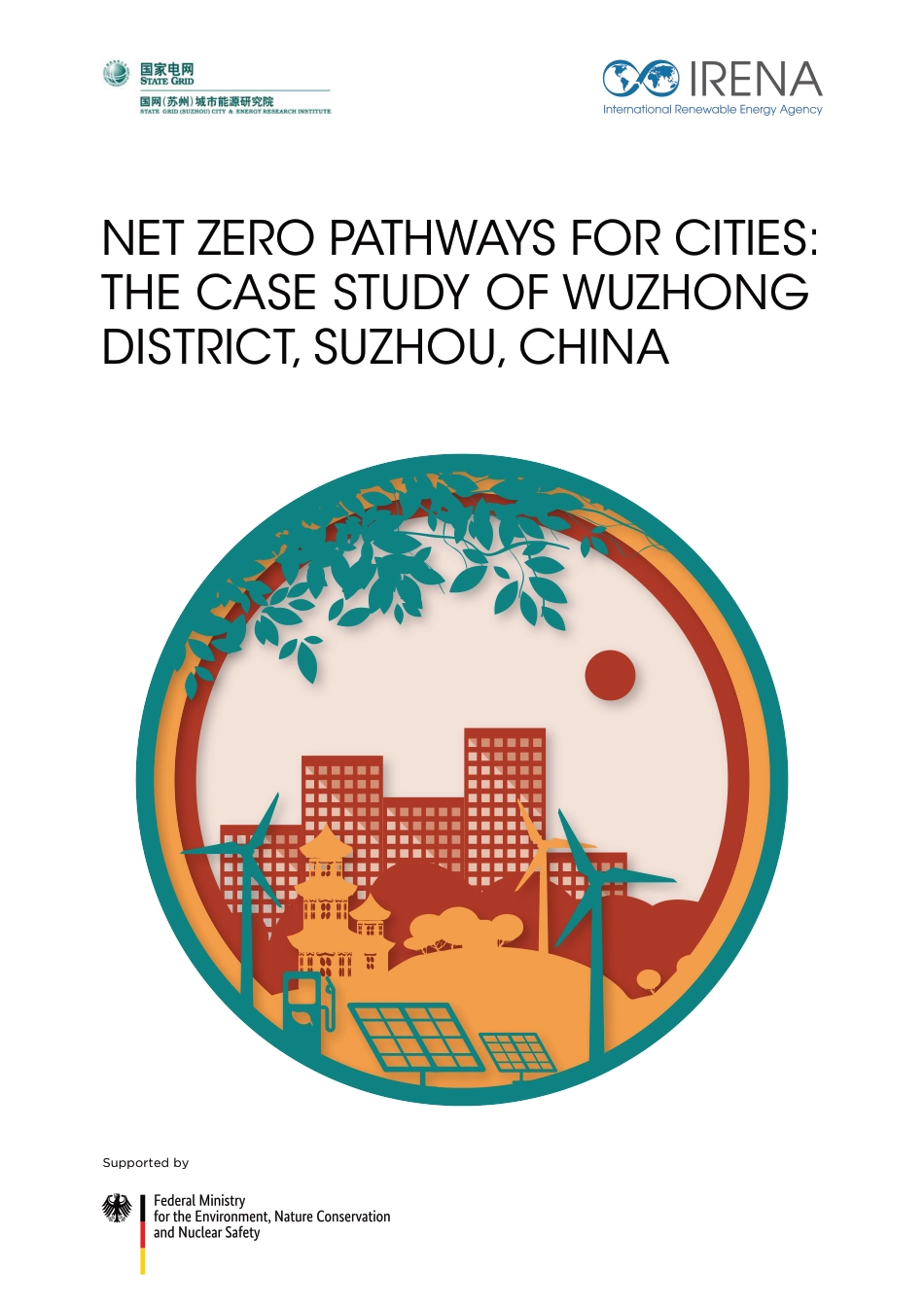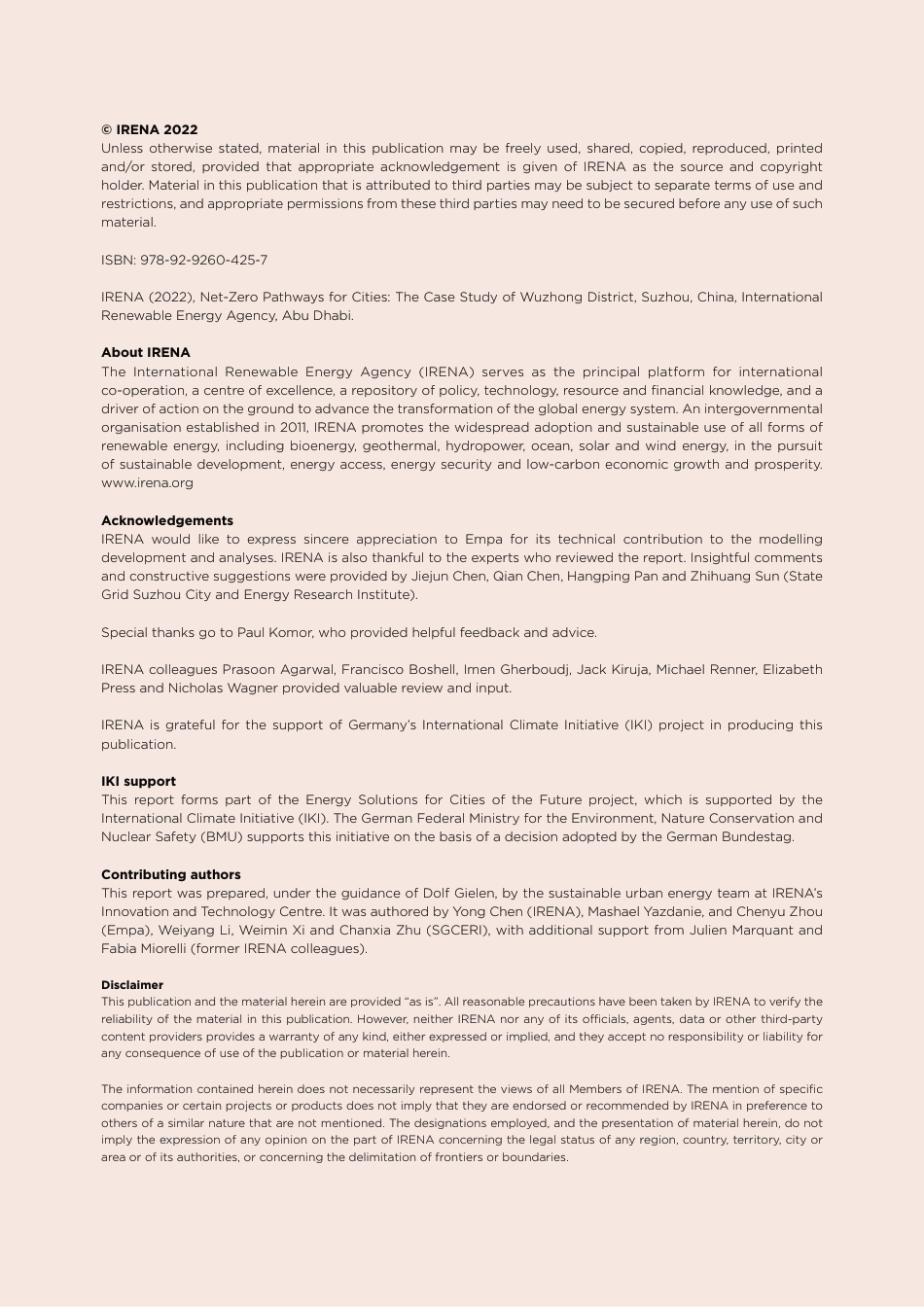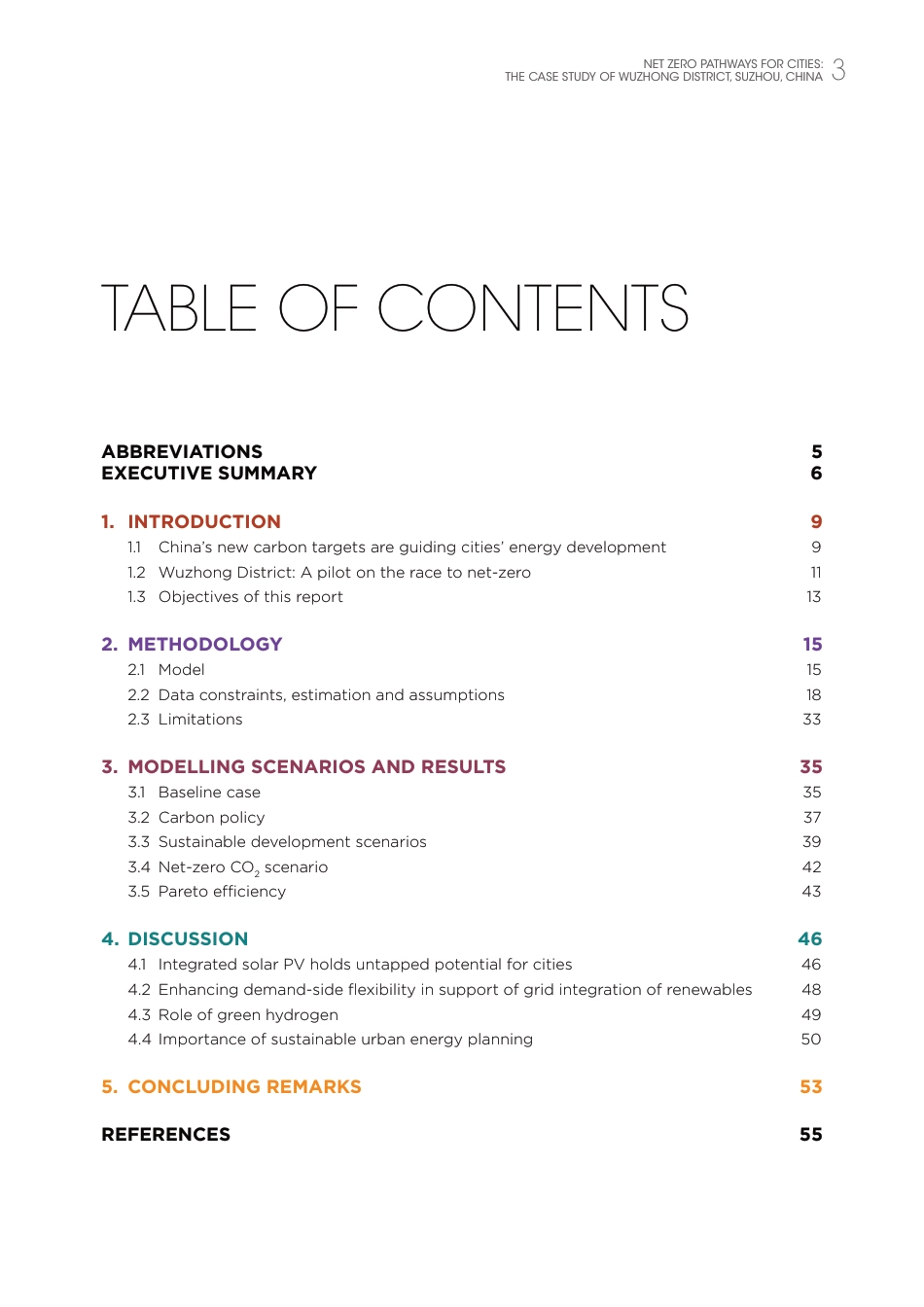Supported bySECTOR COUPLING IN FACILITATING INTEGRATION OF VARIABLE RENEWABLE ENERGY IN CITIESNET ZERO PATHWAYS FOR CITIES: THE CASE STUDY OF WUZHONG DISTRICT, SUZHOU, CHINA© IRENA 2022Unless otherwise stated, material in this publication may be freely used, shared, copied, reproduced, printed and/or stored, provided that appropriate acknowledgement is given of IRENA as the source and copyright holder. Material in this publication that is attributed to third parties may be subject to separate terms of use and restrictions, and appropriate permissions from these third parties may need to be secured before any use of such material. ISBN: 978-92-9260-425-7IRENA (2022), Net-Zero Pathways for Cities: The Case Study of Wuzhong District, Suzhou, China, International Renewable Energy Agency, Abu Dhabi.About IRENAThe International Renewable Energy Agency (IRENA) serves as the principal platform for international co-operation, a centre of excellence, a repository of policy, technology, resource and financial knowledge, and a driver of action on the ground to advance the transformation of the global energy system. An intergovernmental organisation established in 2011, IRENA promotes the widespread adoption and sustainable use of all forms of renewable energy, including bioenergy, geothermal, hydropower, ocean, solar and wind energy, in the pursuit of sustainable development, energy access, energy security and low-carbon economic growth and prosperity. www.irena.org AcknowledgementsIRENA would like to express sincere appreciation to Empa for its technical contribution to the modelling development and analyses. IRENA is also thankful to the experts who reviewed the report. Insightful comments and constructive suggestions were provided by...



